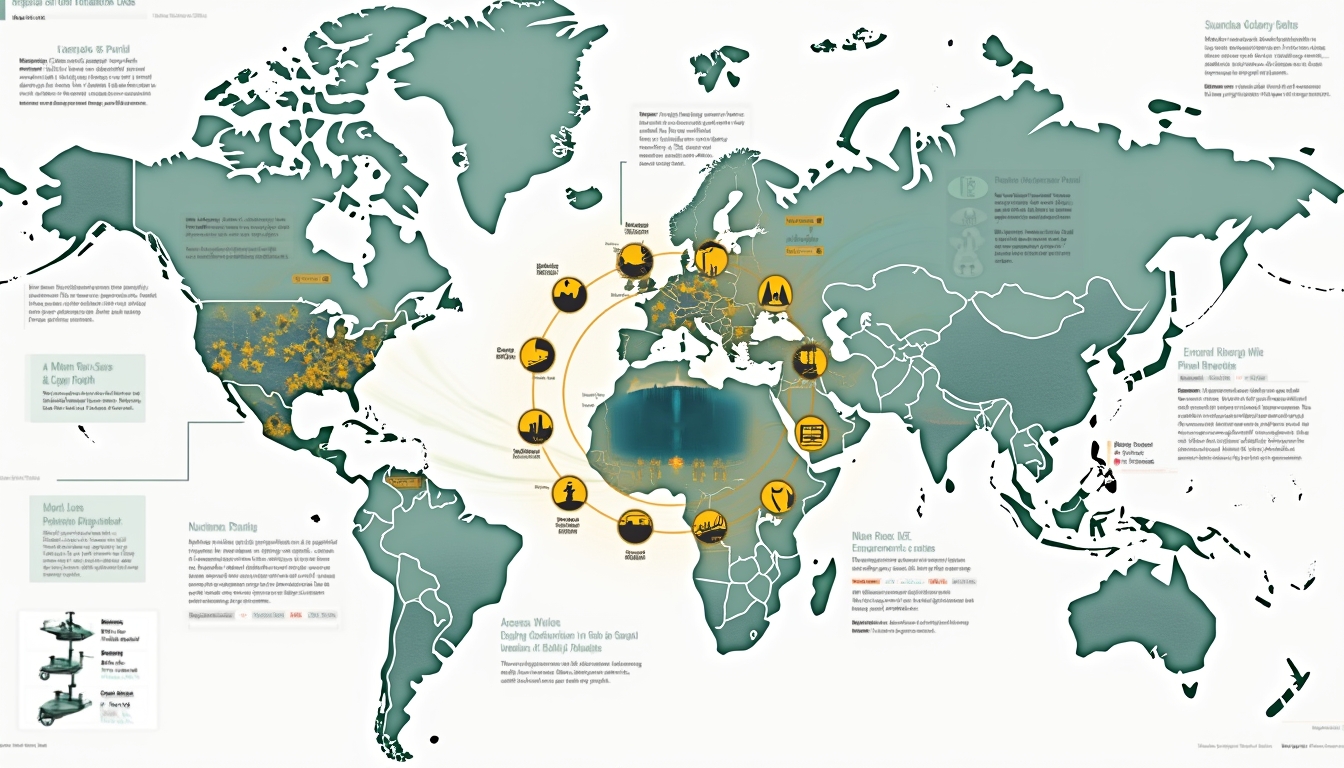Resource companies face many challenges as they work through the stages of project development. Securing strategic economic advice for resource companies is essential to manage risks and maximise opportunities. In today’s dynamic market, companies rely on informed decision-making to navigate uncertainties and to secure long-term success.
Exploration Dynamics: Foundations of Resource Development
The exploration phase is where geological potential becomes economic opportunity. Companies use advanced mapping and sampling techniques to unlock hidden value. In greenfields exploration, teams often apply pioneering approaches when targeting unexplored territories. This approach demands both financial and technical rigour.
Greenfields exploration involves investigating minimally explored regions with little or no existing mining infrastructure. The process is inherently risky, yet the rewards can be substantial when new deposits are found. The method encourages innovative thinking and custom-tailored geological surveys.
Greenfields Exploration Characteristics
Key aspects of greenfields exploration include:
- An absence of existing infrastructure
- Increased geological uncertainty
- Necessity for substantial initial capital
- A pioneering mindset towards untapped opportunities
Specialised techniques, including advanced geophysical methods, are employed to assess these unexplored areas. With this careful groundwork, companies position themselves for enhanced project potential.
Brownfields exploration brings a strategic edge by focusing on regions near established operations. Here, companies benefit from existing data and infrastructure. This technique typically lessens risks compared to greenfields projects and often reduces overall costs. The familiarity with the geographical area can lead to quicker project initiations.
Pre-Development Strategic Phases
Before full-scale development, companies enter a phase of economic evaluation and risk assessment. During the pre-feasibility and scoping stage, detailed technical and commercial studies are performed. This stage often involves detailed jorc reporting which informs a clearer view of a project’s potential.
At the pre-feasibility stage, several key steps occur:
- Comprehensive technical merit assessments
- Preliminary commercial potential analyses
- Identification of primary risks
- Development of mitigation strategies
By methodically addressing each step, companies are better prepared to overcome challenges later in the project lifecycle.
Feasibility Study Implementation
Feasibility studies offer exhaustive examinations of a project’s potential. They encompass detailed economic modelling, environmental assessments, and technical feasibility. These studies help determine whether a project can yield profitable returns while meeting regulatory and ethical standards. Often, companies seek mining feasibility studies insights to better predict economic viability.
Multiple teams collaborate during these studies, ensuring a holistic review of potential obstacles and opportunities. The outcome is a robust plan that guides the transition from planning to construction.
Critical Project Advancement Milestones
Establishing clear milestones is crucial for the smooth progression of projects. One key milestone is the construction decision framework, which encapsulates financial commitment and technical feasibility. During this decision-making process, companies use junior mining investments as a tool for risk management.
Construction Decision Framework
Before construction begins, companies must secure formal project commitments. This commitment is based on:
- Adequate financial resources as proof of market potential
- Confirmation of technical feasibility
- A well-outlined project timeline, often spanning 1-2 years
By breaking down each requirement, companies ensure that control measures are in place to move forward in an organised manner.
Operational Transition Management
Once construction is initiated, focus shifts to operational transition management. This stage involves deploying infrastructure and establishing production capabilities. As revenue generation begins, companies remain vigilant to performance metrics. Many operators also monitor commodity pricing fluctuations, such as the recent iron ore prices, to ensure financial stability.
Successful operational transition is built on strong planning and agile response mechanisms. Ongoing monitoring helps to mitigate unforeseen risks. Operators often re-evaluate performance to ensure objectives are met.
Operational Flexibility Strategies
Adapting to market changes is critical in resource project management. One aspect of this is care and maintenance considerations. Companies may sometimes need temporary shutdowns during periods of low prices or demand. These strategies allow businesses to preserve essential capabilities and prepare strategically for reopening.
Key points in operational flexibility include:
- Implementing temporary shutdown protocols
- Managing costs during downturns
- Preserving core operational capabilities
- Preparing for a strategic restart when market conditions improve
This nimble approach to operations ensures long-term sustainability and resilience.
Risk Mitigation and Optimisation Approaches
Successful project management in resource sectors relies on comprehensive risk mitigation. Companies constantly update risk assessment frameworks and incorporate new data from recent research and market conditions. A dynamic approach to risks includes continuous technical evaluations alongside economic models. Strategic planning must also incorporate forward-looking strategies such as economic impact models.
Additional points include:
- Maintaining flexible management structures
- Regularly revising technical strategies
- Analysing market trends
- Adjusting financial models to accommodate changes in commodity prices
By addressing each element, companies safeguard their projects against volatile market conditions.
Economic Advisory: Enhancing Project Success
Incorporating sound economic advice greatly benefits decision-making stages. Resource companies increasingly seek robust guidance to inform their strategies. Possessing reliable strategic economic advice for resource companies enables them to optimise financial performance, manage market risks, and plan for future growth.
Strategic economic advice for resource companies not only impacts current operations but also sets the tone for future investments. This layered approach combines both micro- and macroeconomic factors to create resilient project plans. The benefits include improved cost-management and more accurate forecasting.
A trend observed in the industry is the increasing reliance on expert external advice. Companies like minex consulting provide specialised insights into market dynamics and economic trends. Their expertise helps incorporate international benchmarks into local projects.
Frequently Asked Questions
What distinguishes greenfields from brownfields exploration?
Greenfields exploration targets untouched territories, while brownfields exploration builds on existing infrastructure. The risk profile is higher with greenfields, though the potential rewards could be significant.
How long do mine development timelines typically take?
Timelines vary based on project complexity. Typically, a full-cycle project from exploration to operational status may take several years with a 1-2 year construction phase.
What factors drive operational transitions in resource projects?
Drive factors include technical readiness, financial viability, and market conditions. Flexible risk and project management are also crucial elements in ensuring seamless transitions.
Conclusion: Navigating Project Complexity
Resource project development requires meticulous planning and agile management. Strategic economic advice for resource companies plays a pivotal role in charting a successful course. Informed decision-making based on technical and economic assessments can result in smoother transitions between project stages.
Companies must embrace each stage’s challenges and opportunities. Detailed planning, comprehensive risk assessments, and strategic external advice form a robust framework. By incorporating practical guidance from reputable sources like csiro futures and leveraging industry insights, the pathway to project success becomes clearer.
Adopting these measures will enable resource companies to sustain competitive advantage in a volatile market. With focused economic strategies and a commitment to continuous improvement, long-term project success is achievable. Strategic economic advice for resource companies emerges as a cornerstone for resilient growth and innovation.
Ready to Gain a Market-Leading Edge in Mineral Discoveries?
Discovery Alert’s proprietary Discovery IQ model provides instant, real-time notifications on significant ASX mineral discoveries, transforming complex geological data into actionable investment insights. Begin your 30-day free trial today and position yourself ahead of the market’s next big opportunity.







